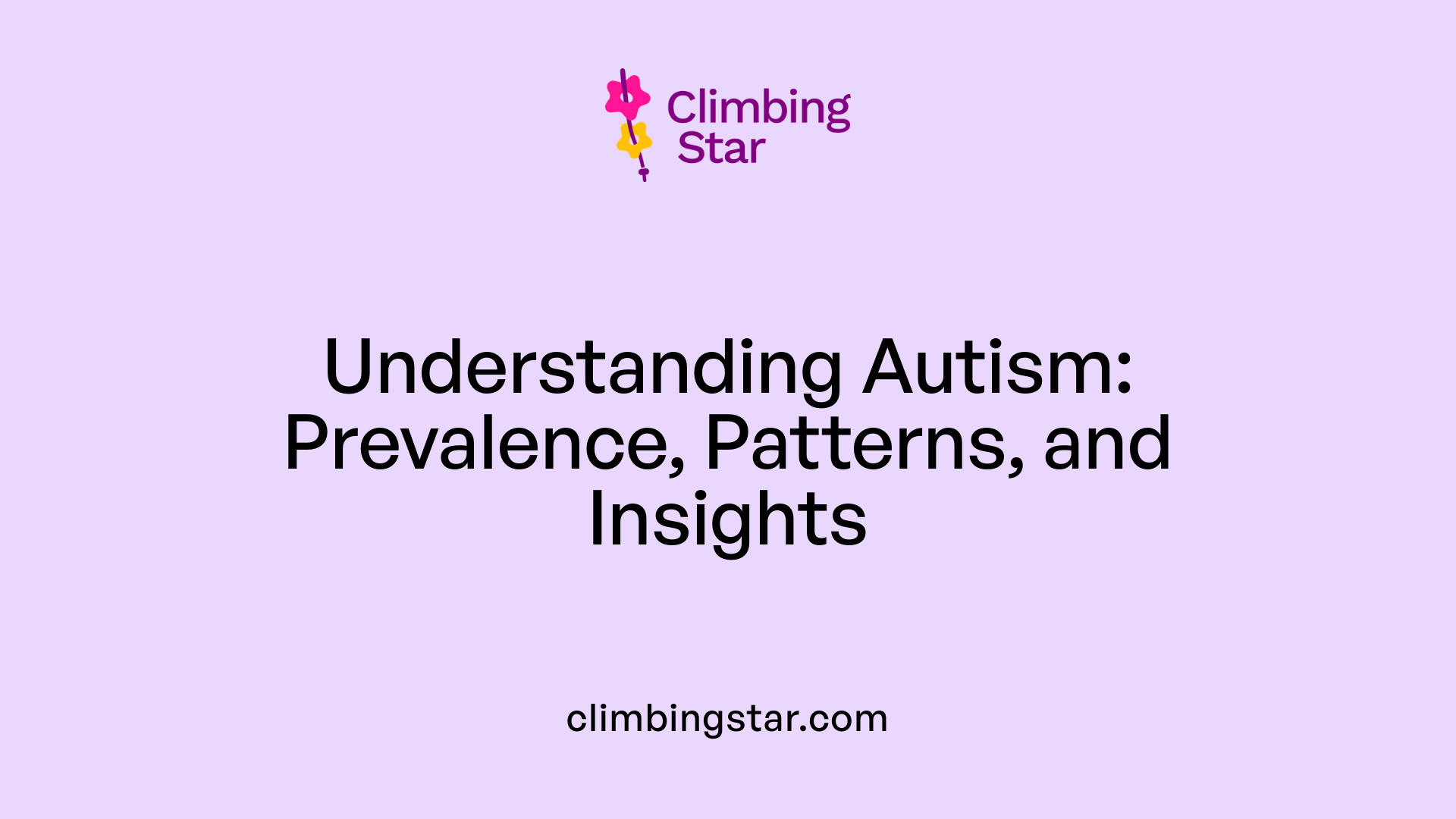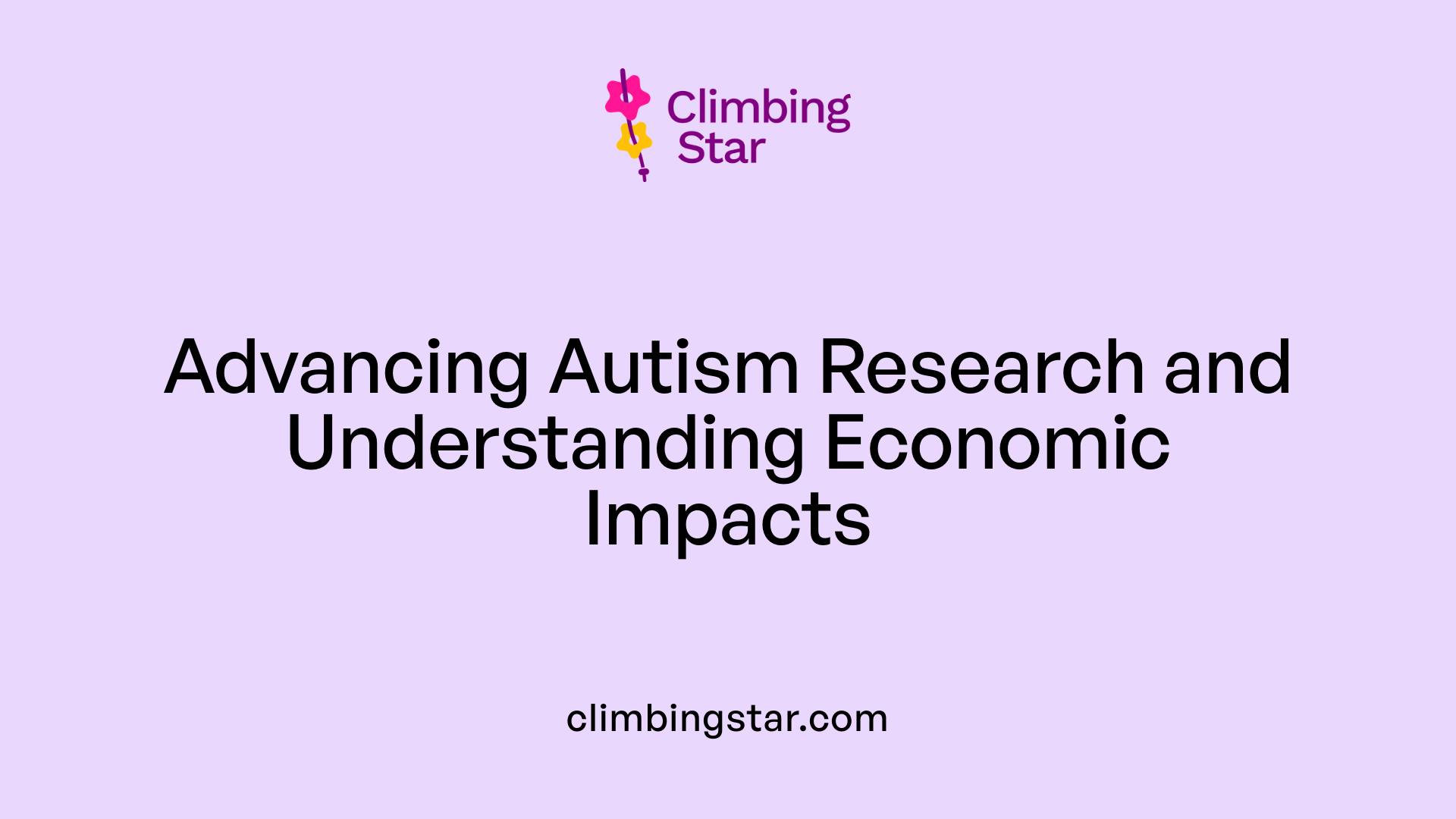Understanding Autism Spectrum Disorder Through Numbers and Therapy
Autism Spectrum Disorder (ASD) has seen a significant rise in diagnosed cases over the past two decades, prompting an increased focus on effective therapies and support systems. This article explores the latest statistics on autism prevalence, demographic patterns, and delves into the pivotal role that Applied Behavior Analysis (ABA) therapy plays in improving the lives of individuals with autism. Through comprehensive data and insights into therapeutic techniques, readers will gain a deeper understanding of both the scope of ASD and the evidence-based approaches to treatment.
Current Prevalence and Demographic Patterns of Autism Spectrum Disorder

What is the prevalence of autism in children?
Recent data from the CDC's Autism and Developmental Disabilities Monitoring (ADDM) Network reveal that about 1 in 31 children aged 8 in the United States have been identified with Autism Spectrum Disorder (ASD), which translates to roughly 3.2% of children. This figure highlights the significance of ASD as a public health concern.
How does ASD prevalence differ by gender?
ASD shows a notable gender disparity in diagnosis rates. Boys are over three times more likely to be diagnosed with autism than girls. Approximately 1 in 20 boys (5%) have ASD, a rate much higher compared to their female counterparts. This gender difference is consistent across all age groups and underscores the importance of tailored diagnostic and intervention strategies.
Which populations are affected by ASD?
ASD occurs across every racial, ethnic, and socioeconomic group in the United States, demonstrating no group is exempt from its impact. This universal prevalence emphasizes the need for inclusive awareness, screening, and services that address diverse communities.
How has autism prevalence changed over time?
There has been a striking rise in ASD prevalence over the last two decades. Data show that in 2000, the prevalence was about 1 in 150 children, which has surged to 1 in 31 in children born around 2014. This nearly fivefold increase suggests improvements in diagnostic practices, heightened awareness, and possibly real changes in risk factors.
What regional variations exist in ASD prevalence?
Prevalence rates vary by geography within the US. For example, California reports a notably high prevalence of approximately 1 in 12.5 children diagnosed with ASD, reflecting potential regional differences in environmental factors, healthcare access, or diagnostic practices.
| Aspect | Details | Notes |
|---|---|---|
| Prevalence Rate | 1 in 31 children (3.2%) | Latest CDC ADDM data |
| Gender Distribution | Boys: 1 in 20; Girls: significantly lower | Boys >3x more likely diagnosed |
| Affected Populations | All racial, ethnic, socioeconomic groups | No group excluded |
| Trend Over Time | From 1 in 150 (2000) to 1 in 31 (2014 birth cohort) | Nearly 5x increase in prevalence |
| Regional Variability | Highest in California: 1 in 12.5 | Indicates possible geographic or diagnostic factors |
Applied Behavior Analysis (ABA) Therapy: An Evidence-Based Approach

What is Applied Behavior Analysis (ABA) therapy and how does it help individuals with autism?
Applied Behavior Analysis (ABA) therapy is a science-backed method that focuses on improving the behaviors and skills of individuals with autism. It encourages positive behaviors such as enhanced communication, social interaction, and daily living skills. At the same time, it aims to decrease behaviors that can be harmful or challenging. ABA achieves these goals through techniques like positive reinforcement and by carefully analyzing what triggers and maintains specific behaviors.
Principles and techniques
The therapy is tailored to each individual, using structured approaches including Discrete Trial Training, Pivotal Response Treatment, and the Early Start Denver Model. These methods break down skills into manageable steps and provide consistent practice and rewards to encourage learning.
Personalization and intensity of treatment
Every treatment plan is customized to suit the specific needs of the child. Typically, ABA is delivered intensively over a number of years, which research shows leads to meaningful progress in language, cognition, and social skills.
Research supporting ABA
Extensive studies affirm ABA’s effectiveness, underscoring its status as an evidence-based practice for autism intervention. Children who receive early and consistent ABA therapy often experience improved outcomes compared to those who do not.
Settings and insurance coverage
ABA can be provided in homes, schools, or clinics, offering flexibility to families. Many insurance programs cover ABA therapy when it is prescribed as medically necessary, making it more accessible to those who need it.
This comprehensive approach makes ABA one of the most widely recognized and recommended therapies for supporting individuals with autism spectrum disorder.
Qualifications and Roles of ABA Therapy Providers

Who Typically Provides ABA Therapy and What Qualifications Do These Professionals Have?
ABA therapy is typically delivered by trained professionals, primarily Board Certified Behavior Analysts (BCBAs) and Registered Behavior Technicians (RBTs). BCBAs hold advanced certification through the Behavior Analyst Certification Board (BACB), which requires a master's degree or higher in behavior analysis or a related field, extensive supervised experience, and passing a rigorous certification exam. This ensures they possess deep expertise in behavioral principles and autism interventions.
RBTs, on the other hand, are paraprofessionals who have completed a specific training program and earned certification to assist with therapy delivery under BCBA supervision. While they do not design treatment plans, they play a vital role in implementing strategies directly with clients.
Types of ABA Providers
- Board Certified Behavior Analysts (BCBAs): Qualified to evaluate, design, and oversee individualized ABA treatment plans.
- Registered Behavior Technicians (RBTs): Trained in delivering ABA therapy following BCBA instructions.
Certification and Training
Both roles require specialized training in behavioral science and autism spectrum disorders. BCBAs undergo more complex educational requirements and supervision, while RBTs complete focused coursework and competency assessments.
Roles of BCBAs and RBTs
BCBAs develop and modify individualized treatment plans based on assessments and ongoing data collection. They supervise RBTs and guide clinical decisions. RBTs provide hands-on therapy, collecting data and implementing interventions.
Development and Implementation of Treatment Plans
BCBAs design treatment plans tailored to each child's unique strengths and challenges, utilizing techniques like positive reinforcement. They continuously monitor progress and adjust plans to improve outcomes, with RBTs executing these plans during therapy sessions.
This collaborative structure ensures that ABA therapy is both expertly designed and effectively applied to support the developmental needs of individuals with autism spectrum disorder.
Measuring Progress and Techniques in ABA Therapy for Autism

How is the progress of individuals undergoing ABA therapy measured and evaluated?
Progress in Applied Behavior Analysis (ABA) therapy is systematically measured using various data collection methods like frequency counts and interval recordings. These tools help establish baseline measurements before therapy and continuously track changes in behavior or skill acquisition over time.
Therapists analyze the collected data using graphs and charts to visualize trends and identify areas that require adjustments. This ongoing evaluation ensures that therapy goals remain aligned with the individual's evolving abilities and needs. Personal factors, such as the age at which therapy starts and family involvement, play a crucial role in the rate of progress, making customized monitoring essential.
Regular assessments create a feedback loop that supports the continuous improvement of behavioral skills and outcomes.
What are the common techniques used in ABA therapy to address behavioral challenges in autism?
ABA therapy employs several techniques tailored to support individuals with autism, including:
Positive Reinforcement: Rewarding desired behaviors to increase their frequency.
Discrete Trial Training (DTT): Using structured, repeated trials to teach specific skills.
Prompting and Fading: Gradually introducing assistance and then slowly removing it to help individuals master new behaviors.
Behavior Chaining: Breaking down complex tasks into sequences taught step-by-step.
Communication Support Methods: Implementing tools like Picture Exchange Communication Systems (PECS) and visual models to enhance communication abilities.
Reinforcement Schedules and Extinction: Utilizing planned reinforcement timing and reducing unwanted behaviors by no longer providing reinforcement.
Natural Environment Teaching and Script Fading: Promoting skill generalization across settings and reducing reliance on scripted responses.
These strategies are customized to fit individual needs, enabling effective modification and acquisition of behaviors.
Additional Insights: Research Advances and Economic Impact of Autism Services

What is the NIH Autism Data Science Initiative and its focus?
The NIH Autism Data Science Initiative (ADSI) is a major research effort that has awarded over $50 million to projects investigating autism. This initiative uses large-scale data, encompassing genetic, environmental, and behavioral factors, to unlock deeper understanding of autism's causes and effects.
How do exposomics and environmental factors relate to autism?
Exposomics is a significant focus area within ASD research, involving the comprehensive study of environmental exposures. These exposures include chemicals, maternal diet, medication use during pregnancy, and psychosocial stressors. Researchers explore how these factors impact autism risk and developmental outcomes across the lifespan.
What research methods are being used, and what is the lifespan approach?
Scientists employ innovative techniques such as exposome-wide association studies, machine learning algorithms, and advanced organoid models (miniature lab-grown brain structures) to study autism. The lifespan approach ensures research addresses needs from early childhood through adulthood, recognizing that autism affects individuals at every stage of life.
What are the costs associated with autism services?
The economic impact of autism includes the costs of essential therapies. On average, speech and language therapy costs approximately $174.80 per session, while behavioral therapy sessions average $175.44. These therapies are critical for improving communication and behaviors in autistic individuals.
How do autistic individuals perform in education and employment?
Educational outcomes show that about 74% of autistic students graduate from high school, with 19% earning graduation certificates. Employment rates are about 21%, with better job prospects for those who receive vocational rehabilitation services. These statistics highlight ongoing challenges and opportunities for support in education and the workforce.
Summary and Future Outlook on Autism and Therapy
The rising prevalence of Autism Spectrum Disorder underscores the critical need for effective intervention strategies such as Applied Behavior Analysis therapy. With its strong research foundation and personalized approach, ABA remains a cornerstone treatment that supports skill development and behavioral improvements essential for individuals with autism. Ongoing research initiatives funded by the NIH and others continue to deepen our understanding of autism's causes and refine therapeutic approaches. Despite challenges, advances in diagnosis, treatment, and inclusive education and employment opportunities hold promise for improving the quality of life for those on the spectrum. Continued investment in research, therapy accessibility, and community support will be key to addressing the complex needs of the growing autism population.
References
- Data and Statistics on Autism Spectrum Disorder
- Autism Announcement Fact Sheet
- Autism statistics and facts
- Applied Behavior Analysis (ABA)
- How to Become an Applied Behavior Analyst (ABA) Therapist
- Applied Behavior Analysis (ABA)
- Applied Behavior Analysis (ABA)
- Applied Behavior Analysis in Children and Youth with ...
- Applied Behavior Analysis (ABA)
- ABA Techniques: Strategies for Behavior Analysts - GSEP Blog







